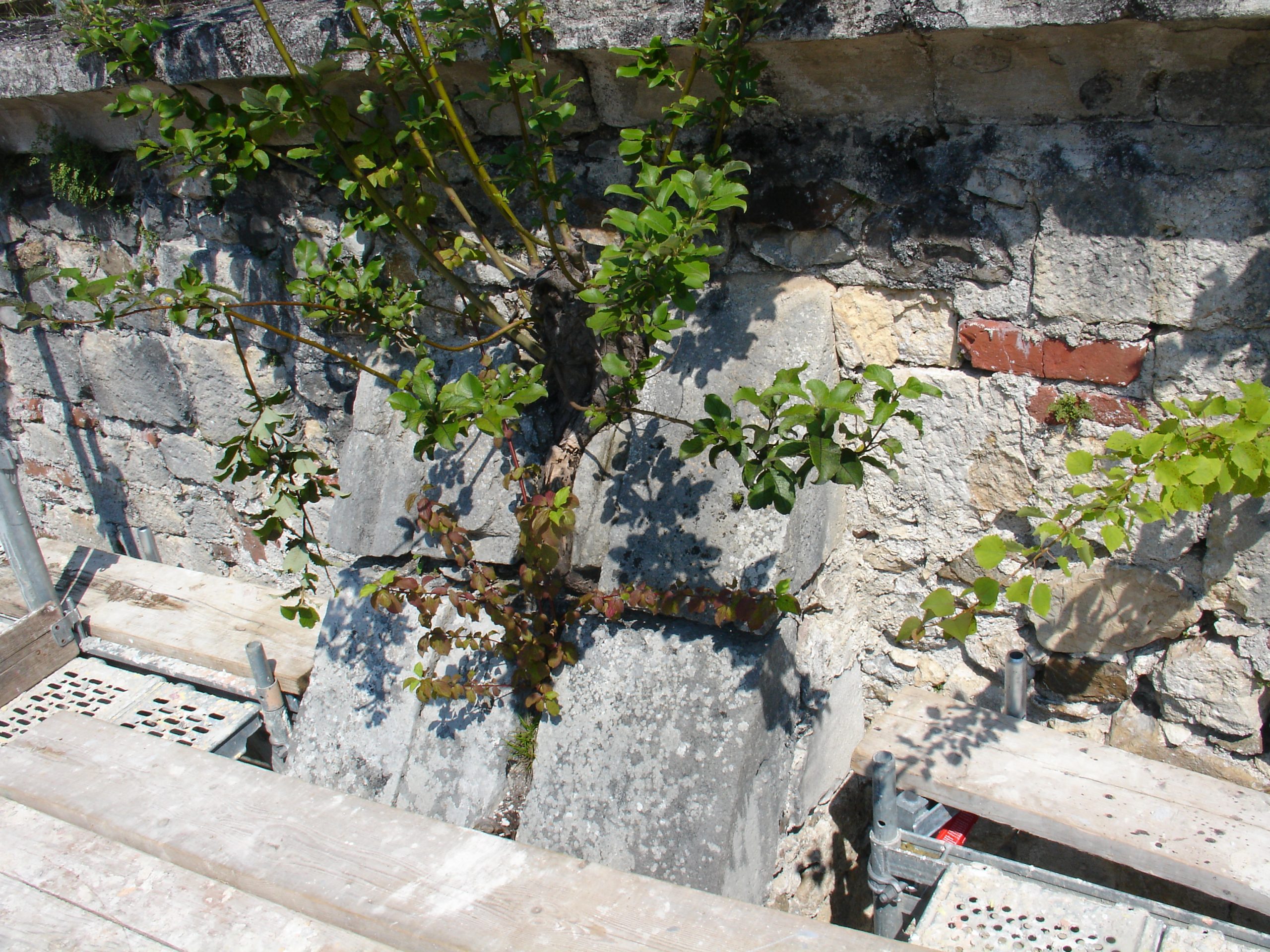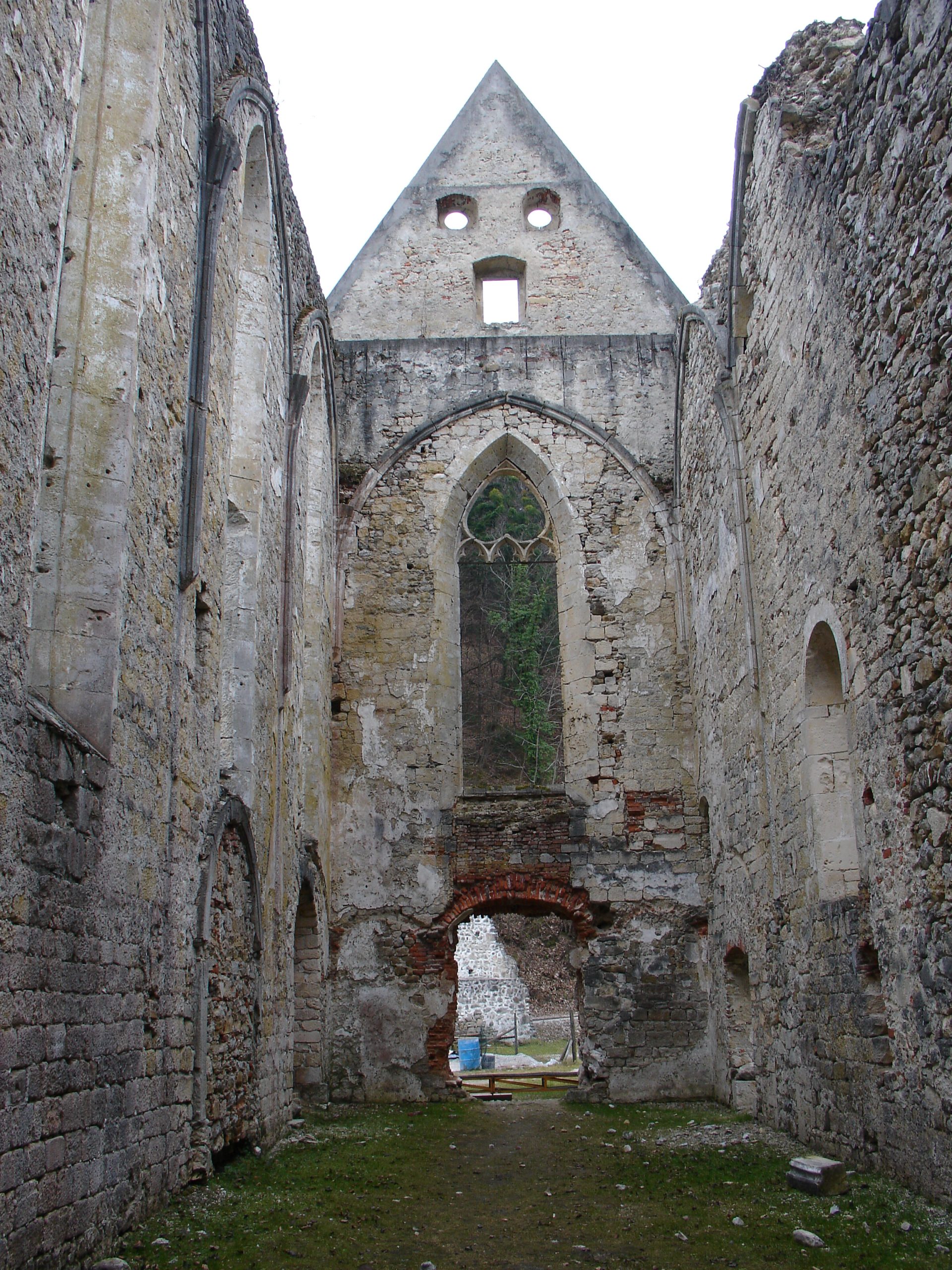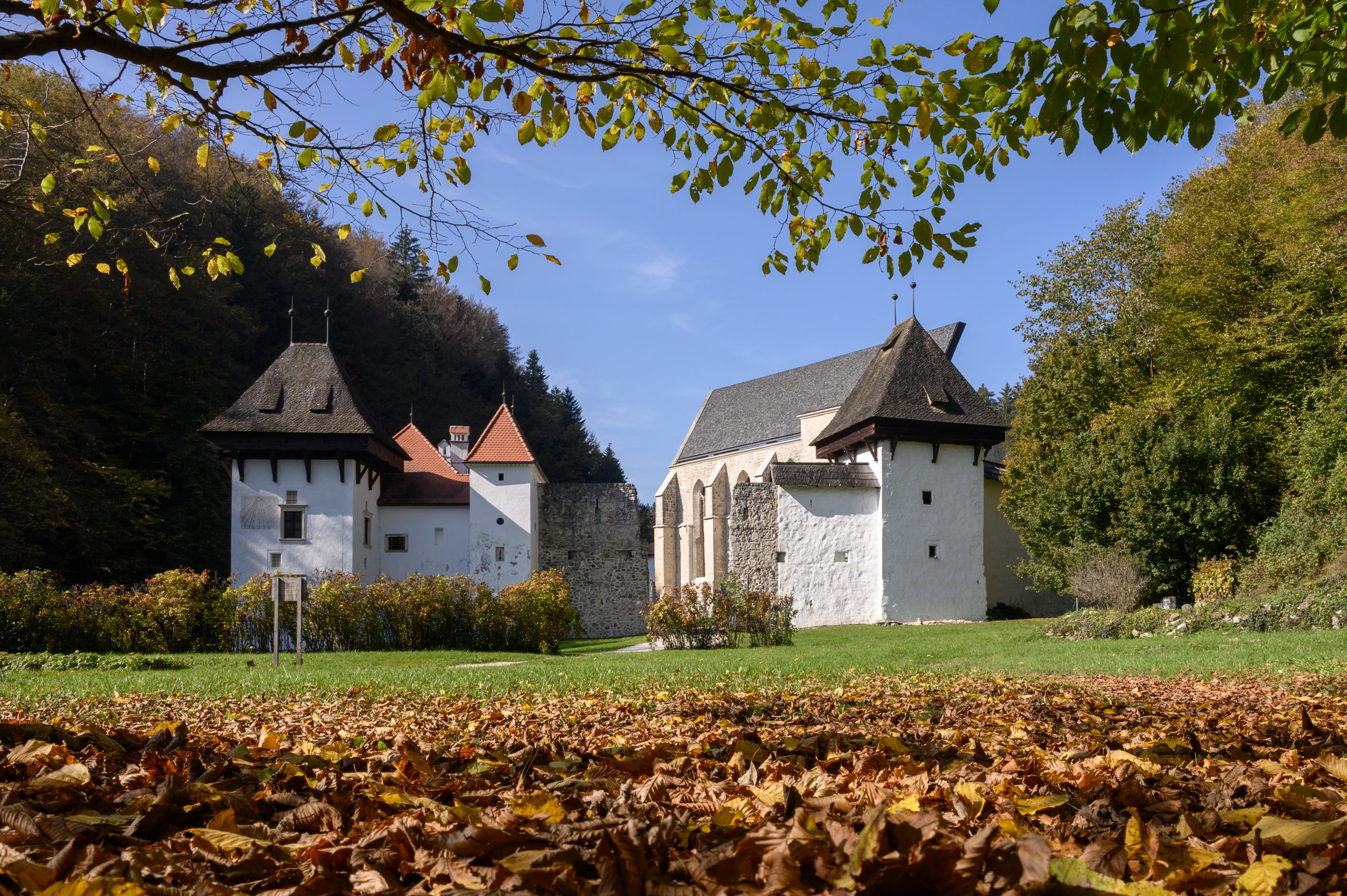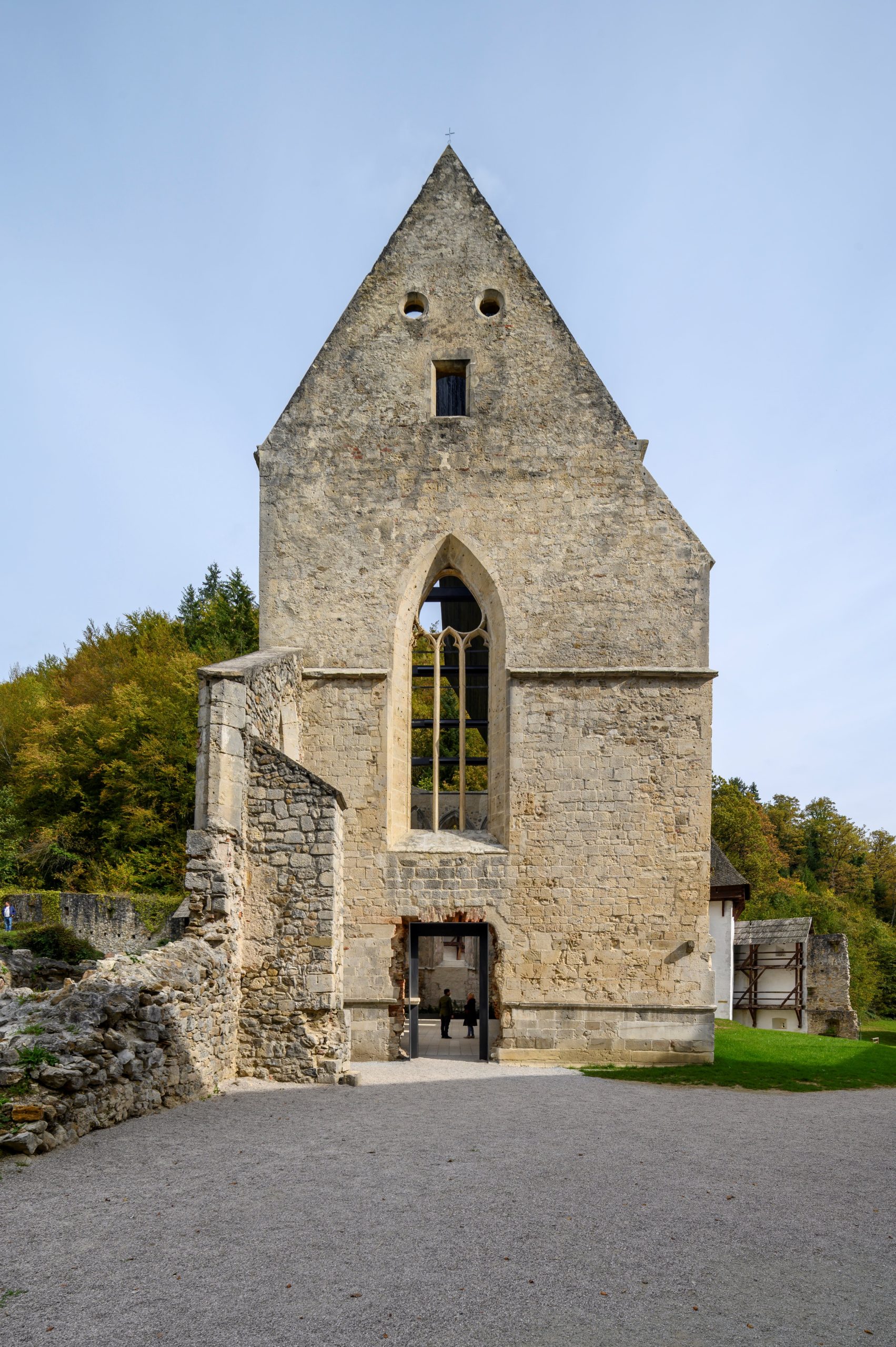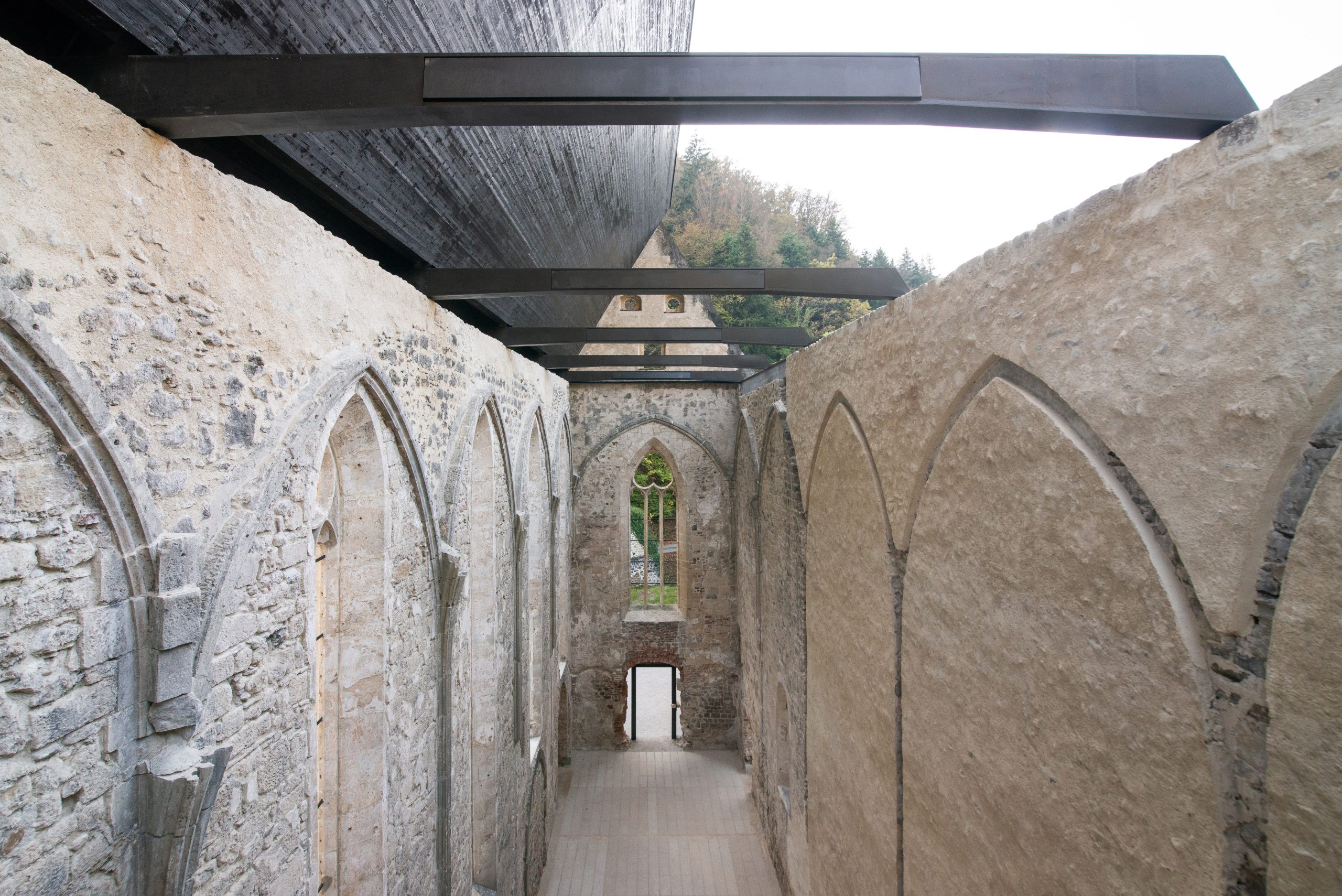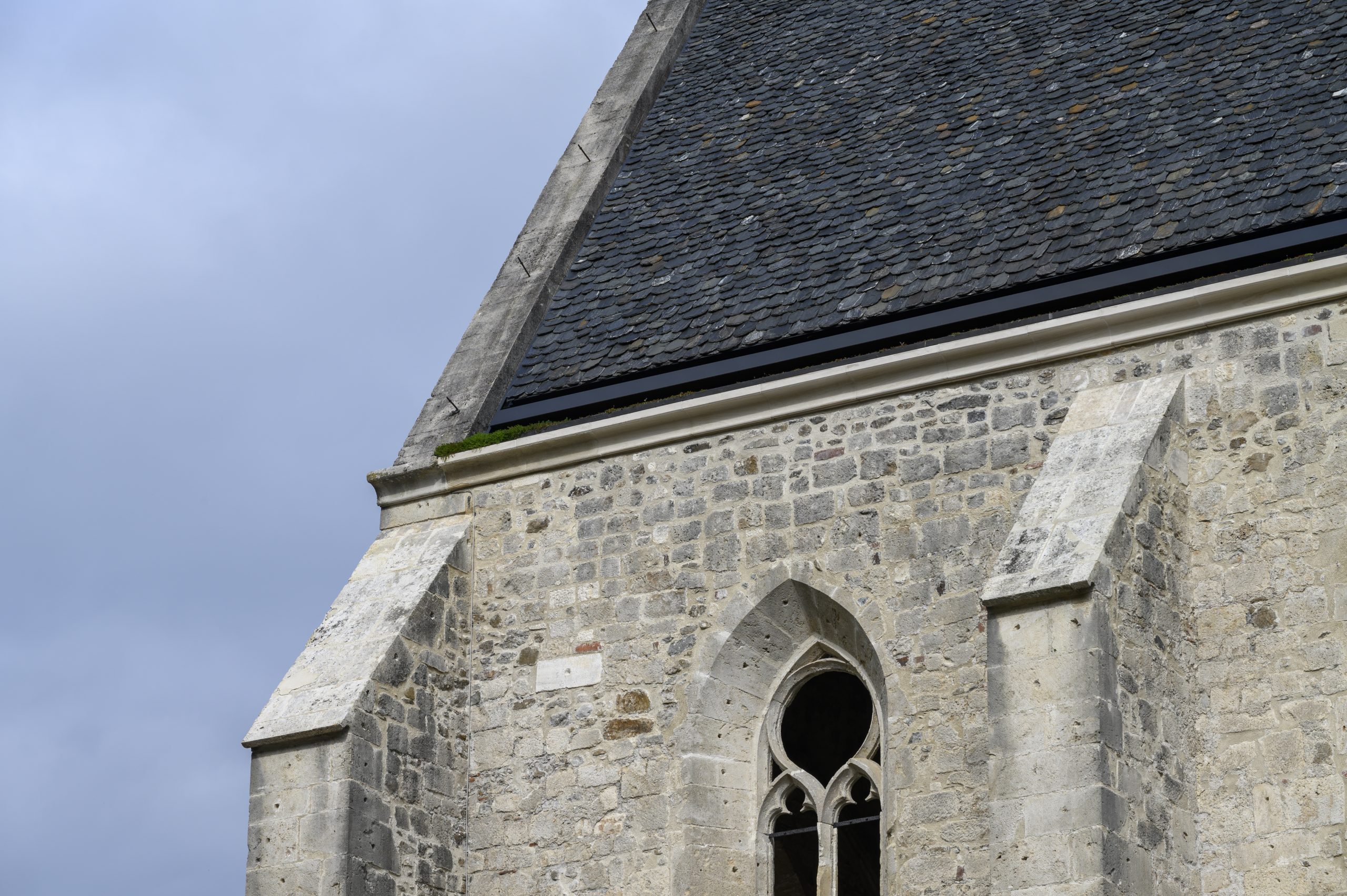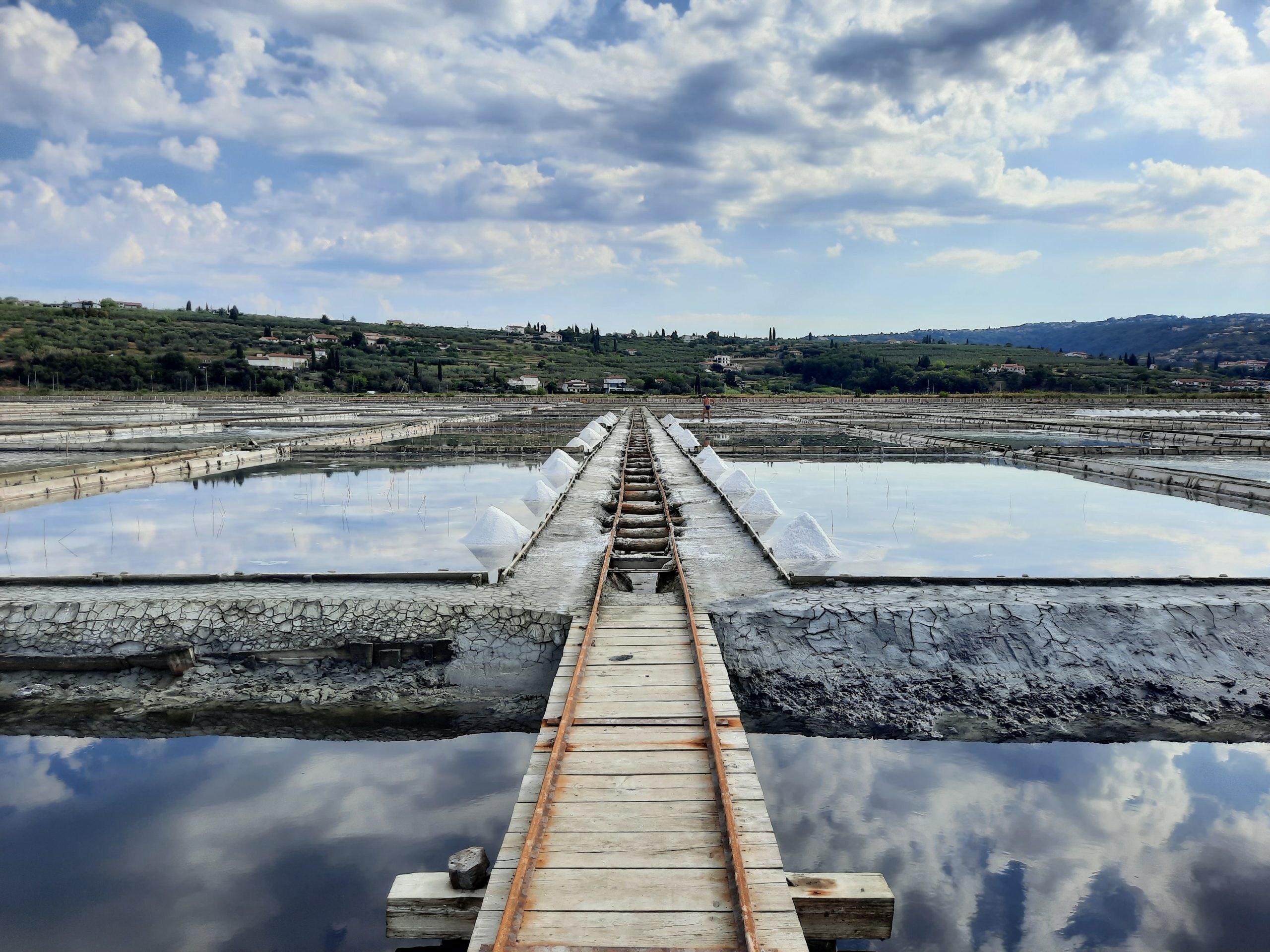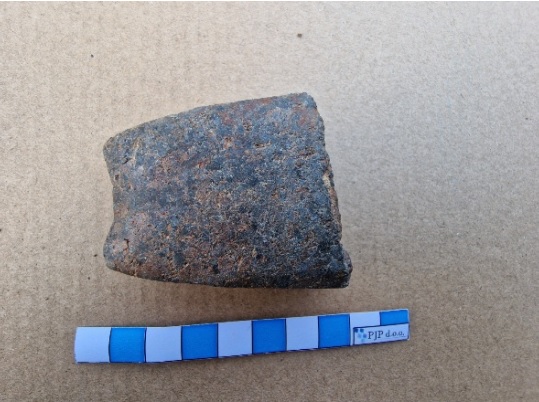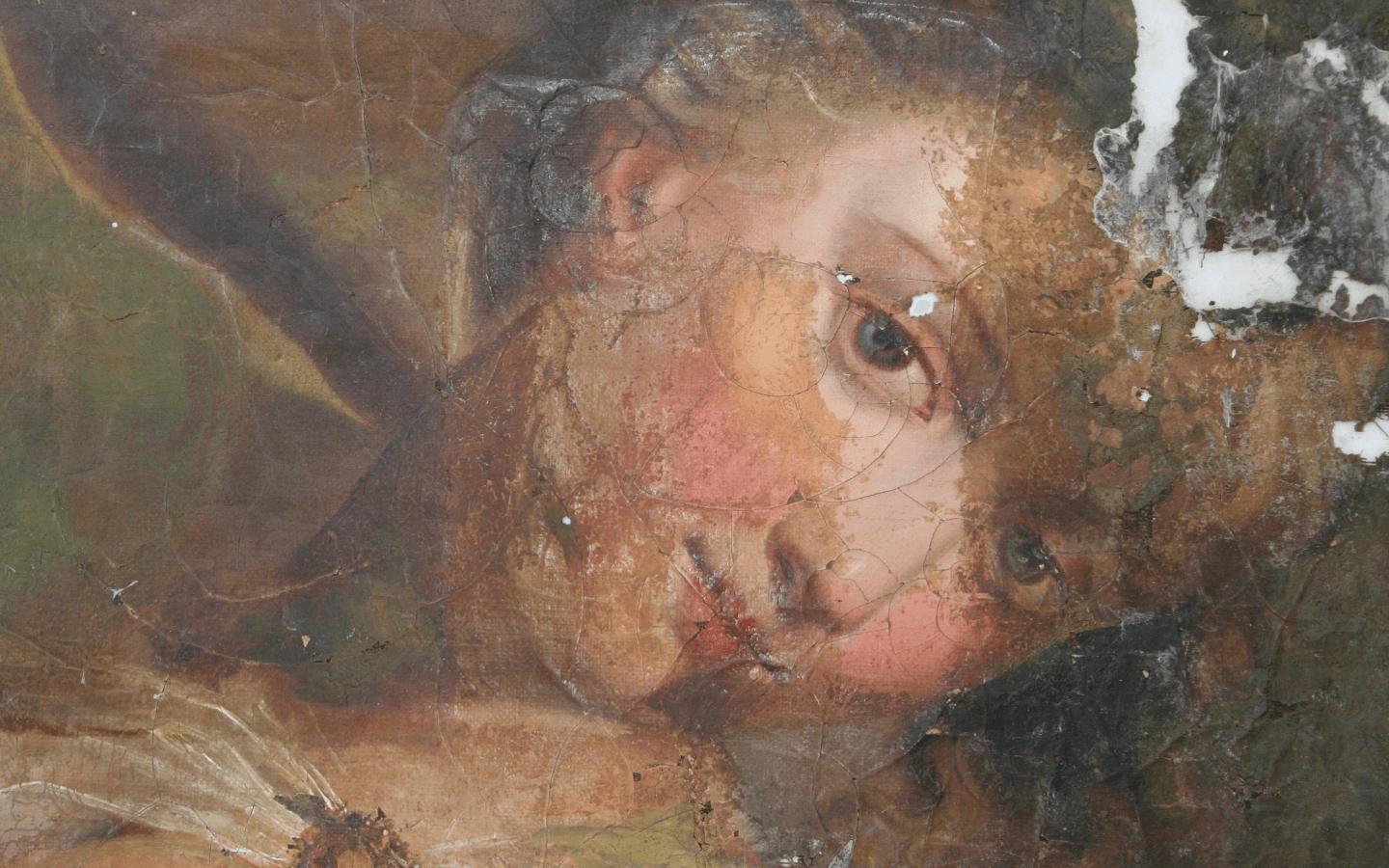Žiče Carthusian Monastery is an exceptional monument of monastic architecture that transcends the Slovenian landscape. Its architectural fabric preserves all the main stylistic periods of European art. Its architectural, symbolic, historical, archaeological and landscape values make it of exceptional importance for the country, which is why it was declared a cultural monument of national importance in 2015.
Text by Matija Plevnik
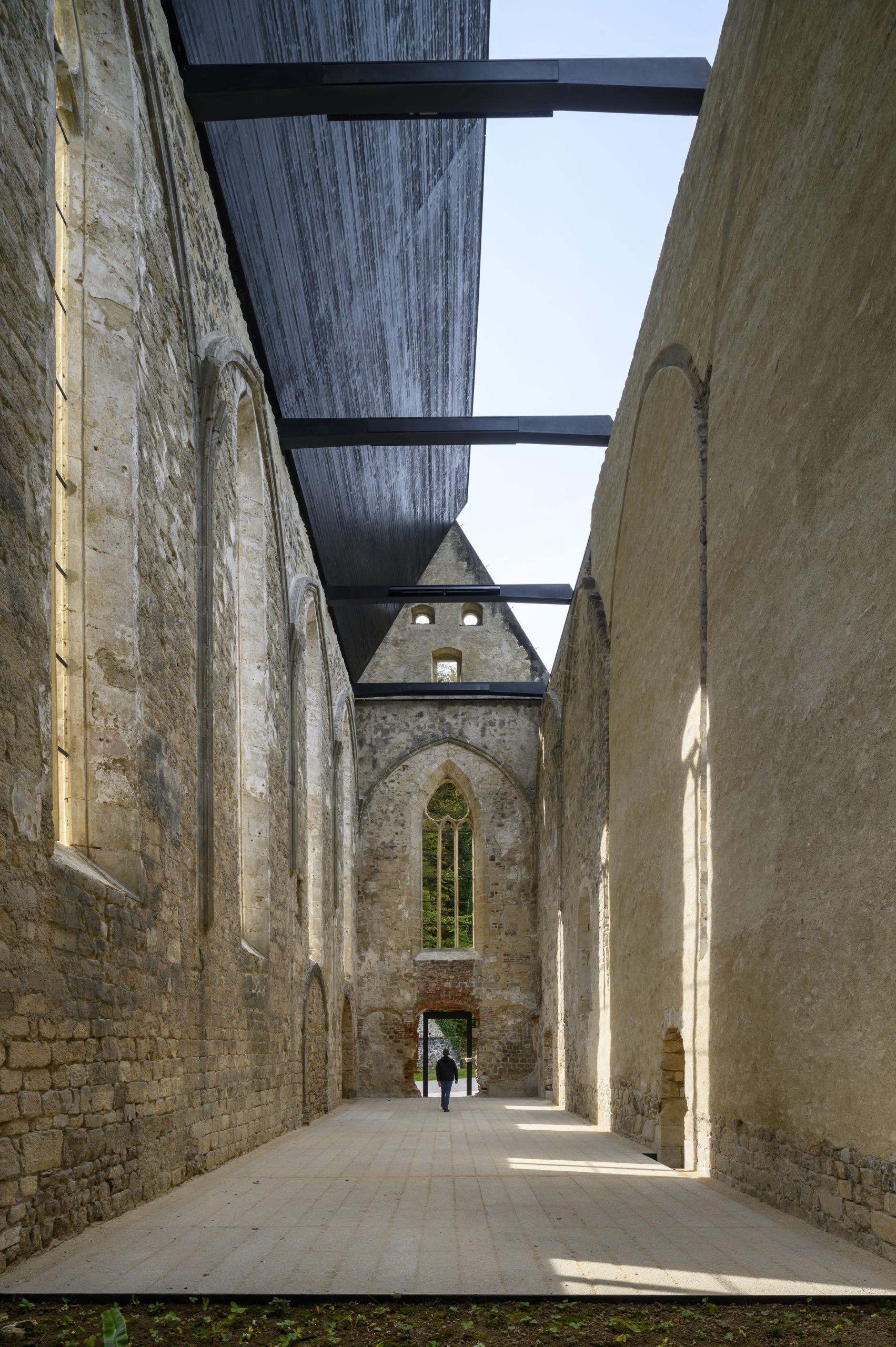
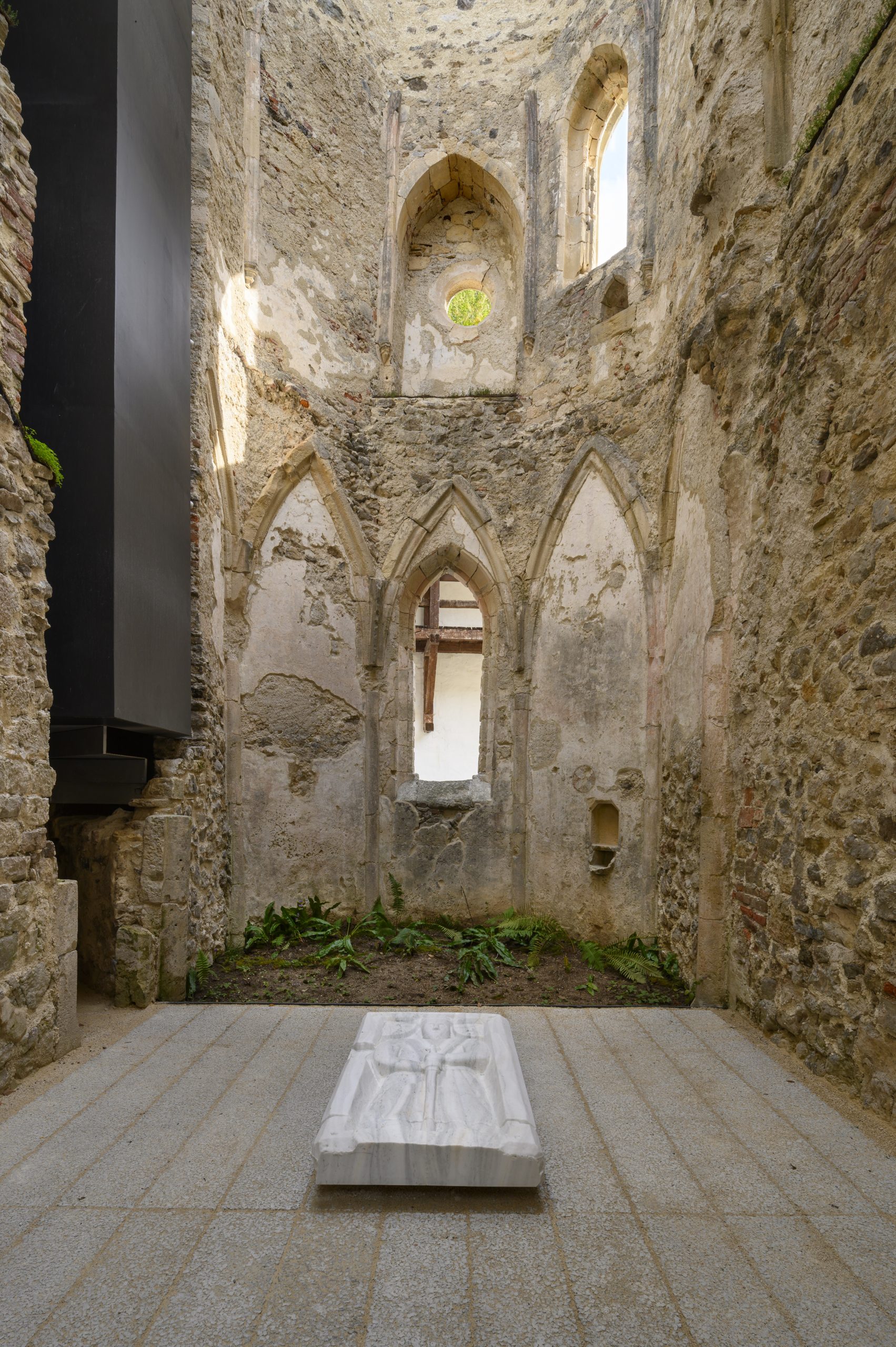
The medieval church of St John the Baptist dominates the Upper Monastery. Since the dissolution of the monastery in 1782, or the end of the parish church three decades later, the building has fallen into serious disrepair and has even partially collapsed. The first, urgent protection works were carried out by Jože Curk in the mid-1950s, and his work was continued by Dr Marijan Zadnikar and Dr Nataša Štupar Šumi, who strengthened the building structurally and structurally in the 1960s. The work was continued by Ivan Stopar, followed by Bogdan Badovinac and Ivo Gričar.
Situation before the last renovation
Due to lack of sufficient funds, the building has started to deteriorate again. This was due to the overgrowth of plants and their root systems into the building core and the loosening of the bindings (especially in the upper levels of the perimeter walls) due to the lack of protection from rainwater and weathering. In the first decade of the 21st century, the church was even closed to visitors for some time due to the collapse of the upper parts.
Ruins Protection Project (2019-2022)
According the project of Roko Žnidaršič and the architectural studio Medprostor, the fixed and movable part of the roof, a lookout point with an accessible corridor, two spiral staircases for visitors, new church walkways and the presentation of the entrance of the west façade were implemented. Sound and light equipment was installed in the new metal trusses to meet the needs of cultural events.
The modern roof is committed to the function of protecting the ruins, yet it goes beyond it by maintaining the duality of the view of the church and addressing both of its most prominent views; the "open ruin" (view from the north), while at the same time, with its fixed roof, its steep Gothic pitch and its historic roofing, it recreates the most characteristic view of the Carthusian, and visually complements the buildings that make up the southern courtyard.
The project was an interdisciplinary collaboration of several different disciplines and institutions.
The works were completed in autumn 2022, with all interventions consistently pursuing clearly defined primary objectives: 1. to preserve the character of the ruined church; 2. to preserve its documentary value and significance, its current aesthetic and visual appearance, and to preserve its distinctive scientific potential; and 3. to create conditions for the longer-term preservation of all the above-mentioned values and of all the original elements of the monument through the interventions.
In 2024, the Plečnik Prize was awarded to the project - cover of the church remains.
After the interventions
In its primary function, the Church was a meeting place for lay brothers and religious. As such, it must continue its mission - it must be a meeting point between the lay public, conservation and its parent disciplines. At the same time, this former sacral building has become a modern venue for cultural events, which does not override the protected values of this exceptional monument.

